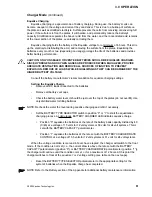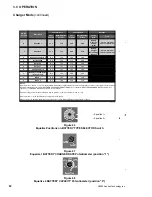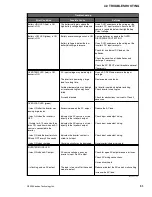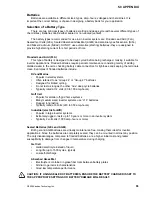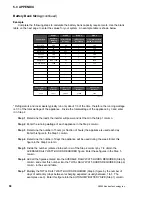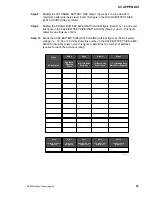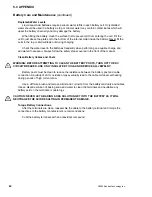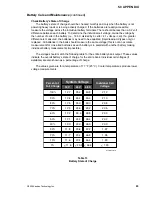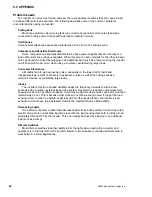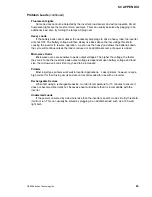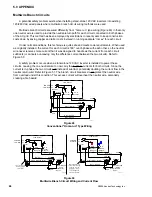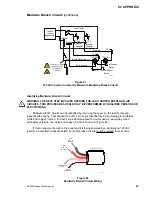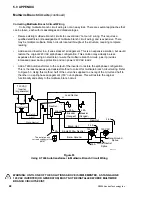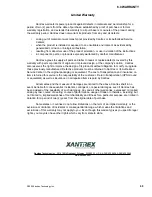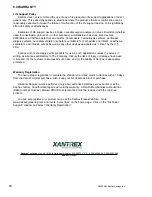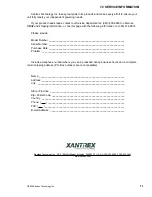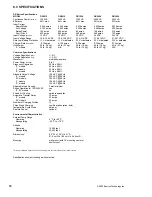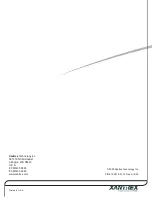
5.0 APPENDIX
65
©2000 Xantrex Technology Inc.
Problem Loads
(continued)
Fluorescent Lights
Some devices cannot be detected by the inverters load sensor and will not operate. Small
fluorescent lights are the most common example. This can usually be solved by plugging in an
additional load. Also, try turning the lamps AC plug over.
Heavy Loads
If the battery bank cannot deliver the necessary amperage to drive a heavy load, the inverter
will shut OFF. The battery voltage will then slowly rise back above the low voltage threshold
causing the inverter to resume operation. As soon as the heavy load draws the batteries down,
the cycle will continue unless the load is reduced or an additional source of power is added.
Microwave Ovens
Microwave ovens are sensitive to peak output voltages. The higher the voltage, the faster
they cook. Since the inverters peak output voltage is dependent upon battery voltage and load
size, the microwaves cook time may need to be increased.
Printers
Most inkjet type printers work well in inverter applications. Laser printers, however, require
high current for their fusing circuit and are not recommended for use with an inverter.
Rechargeable Devices
When first using a rechargeable device, monitor its temperature for 10 minutes to ensure it
does not become abnormally hot. Excessive heat will indicate that it is incompatible with the
inverter.
Undersized Loads
If the power consumed by a device is less than the inverters search mode circuitry threshold,
it will not run. This can usually be solved by plugging in an additional load such as a 100 watt
light bulb.
Summary of Contents for Trace DR Series
Page 1: ...Installation Operator s Manual DR Series Inverter Charger ...
Page 2: ......
Page 81: ......
Page 82: ......
Page 83: ......

